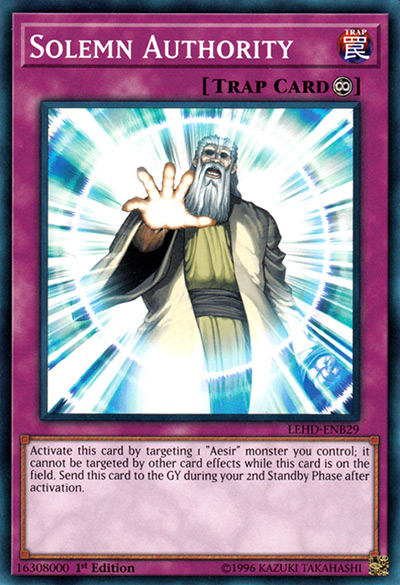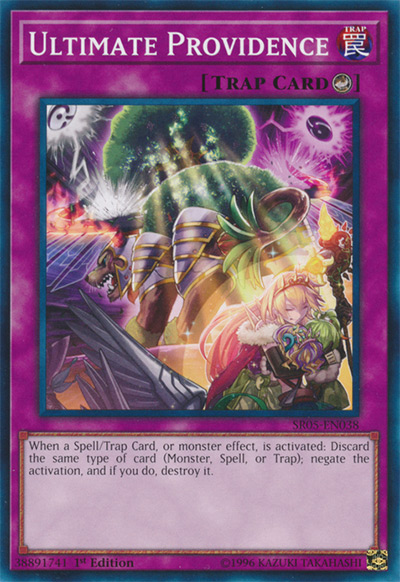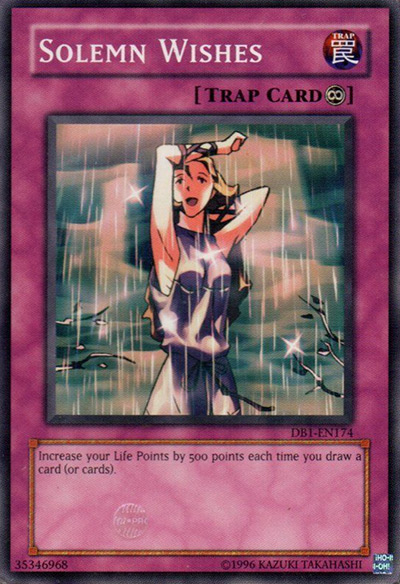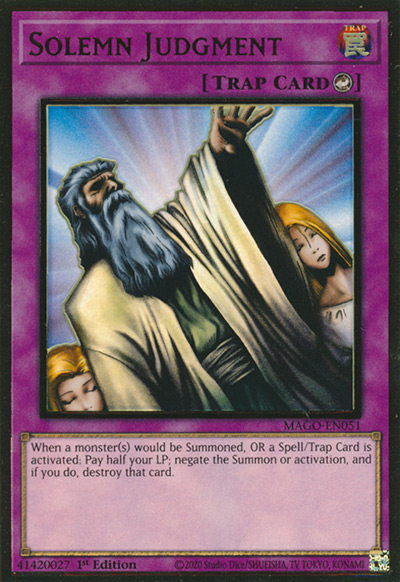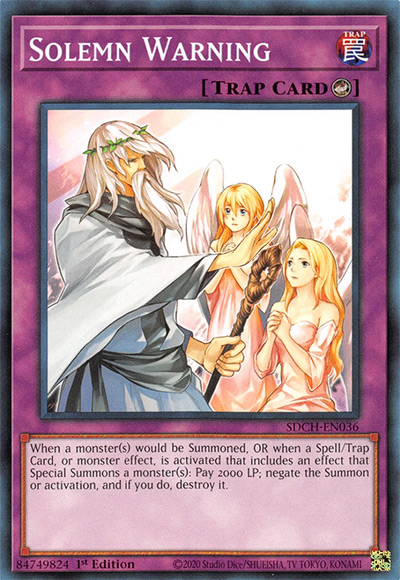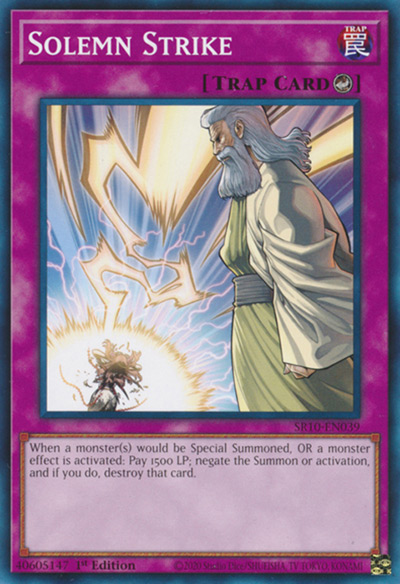But the thing is that most players actually don’t know about all the other cards in the Solemn archetype that don’t disrupt your opponent for life points. In fact, one of the cards even boosts your life points and has nothing to do with the opponent at all. Even so, are these cards relevant to your deck, or are you better off sticking to the more well-known Solemn cards? Let’s find out:
7. Solemn Authority
The first Solemn card on this list is the only card that’s specifically related to the Aesir archetype. When you activate Solemn Authority, you can target an Aesir monster you control, and it can’t be targeted by card effects (for as long as Solemn Authority is in play on the field). But Solemn Authority is sent to the graveyard after the second standby phase from when you activate it. I can’t remember the last time I’ve seen a person even holding an Aesir card, since the meta has shifted too much to make this archetype competitively viable. That’s why this one’s at the bottom of the ranking.
6. Solemn Scolding
Solemn Scolding is the start of the classic Solemn archetype effects we all know and love. But pay attention, because all the similar effects might get confusing. Solemn Scolding is a counter trap, and you can activate it by paying 3000 life points to negate and destroy a monster summon or a card effect activation. However, this card can only be activated if it’s the only trap in your spell and trap zone. The life points you have to pay to activate this card is one of the steeper risks compared to the rest of the archetype. In addition, the fact that this should be the only set card in your spell and trap zone just doesn’t make this card very good.
5. Ultimate Providence
Now I know this doesn’t sound or look like a Solemn archetype card, but based on the original Japanese name, it does indeed belong to the Solemn family. Anyways, you can activate Ultimate Providence when a spell, trap, or monster effect is activated, and then negate and destroy the card. In exchange, you’ll need to discard the same type of card as the one you’re chaining to (i.e. monster, spell, or trap). If you’re playing a deck full of these Solemn cards, you can consider using Guiding Ariadne to get rid of the cost of activating Solemn cards.
4. Solemn Wishes
Solemn Wishes is a quick detour from the traditional “pay a cost to negate a card” effect. In fact, it has nothing to do with your opponent at all. This is a continuous spell, and while it’s on the field, you gain 500 life points for every card you draw. Solemn Wishes works amazingly in an Exodia deck since you’ll be drawing a large amount of cards to win. Some popular forms of Exodia use Appropriate, Heart of the Underdog, and so on. In a 40 card deck, you might expect to draw around 36 cards to get a full Exodia in your hand. Excluding the starting 5 cards and initial draw, this is 30 cards, or 15,000 additional life points, which would give you 23,000 in total to buffer damage.
3. Solemn Judgment
Solemn Judgment is finally a card that most players are actually familiar with. And depending on how you look at it, it can still be quite a decent one. You can activate Solemn Judgment by paying half your life points whenever a monster is summoned, or a spell or trap is activated. You can then negate and destroy that summon/card activation. With Solemn Judgment, it doesn’t make much sense to play it early on in the game, since that’s when you’ll have to give up the most life points. However, the start of the game is usually the best time to cripple your opponent so you can finish them off early. While this card can be extremely useful later on, whether or not you think this card is applicable to your strategy is really up to you.
2. Solemn Warning
Solemn Warning is something that I see a good handful of people playing, so it’s definitely a viable card. You can activate Solemn Warning by paying 2000 life points when a monster is summoned, or if a monster effect is activated that includes special summoning another monster (or if a spell or trap is activated). That summon/activation is then negated and destroyed, just like all the other Solemn cards. 2000 life points as a payment actually isn’t too bad of a deal for the ability to negate a monster summon, which may be crucial to your opponent. So out of all the Solemn cards, this is by no means a bad choice.
1. Solemn Strike
However, out of all the cards on this list, the one that trumps them all is Solemn Strike. Unlike the other cards here, Solemn Strike only negates a monster summon or monster effect at the cost of 1500 life points. In most situations, monster effects or summons are usually the main threat compared to spells and traps. Moreover, 1500 is a cheaper cost than both Solemn Warning, Solemn Authority, and Solemn Judgment (in most cases). Overall, Solemn Strike deals with the biggest threats at the cheapest cost. Which is why it has become such a popular card for many decks. But this can be a bit of a pricey card to get, so just keep that in mind when making a deck.
